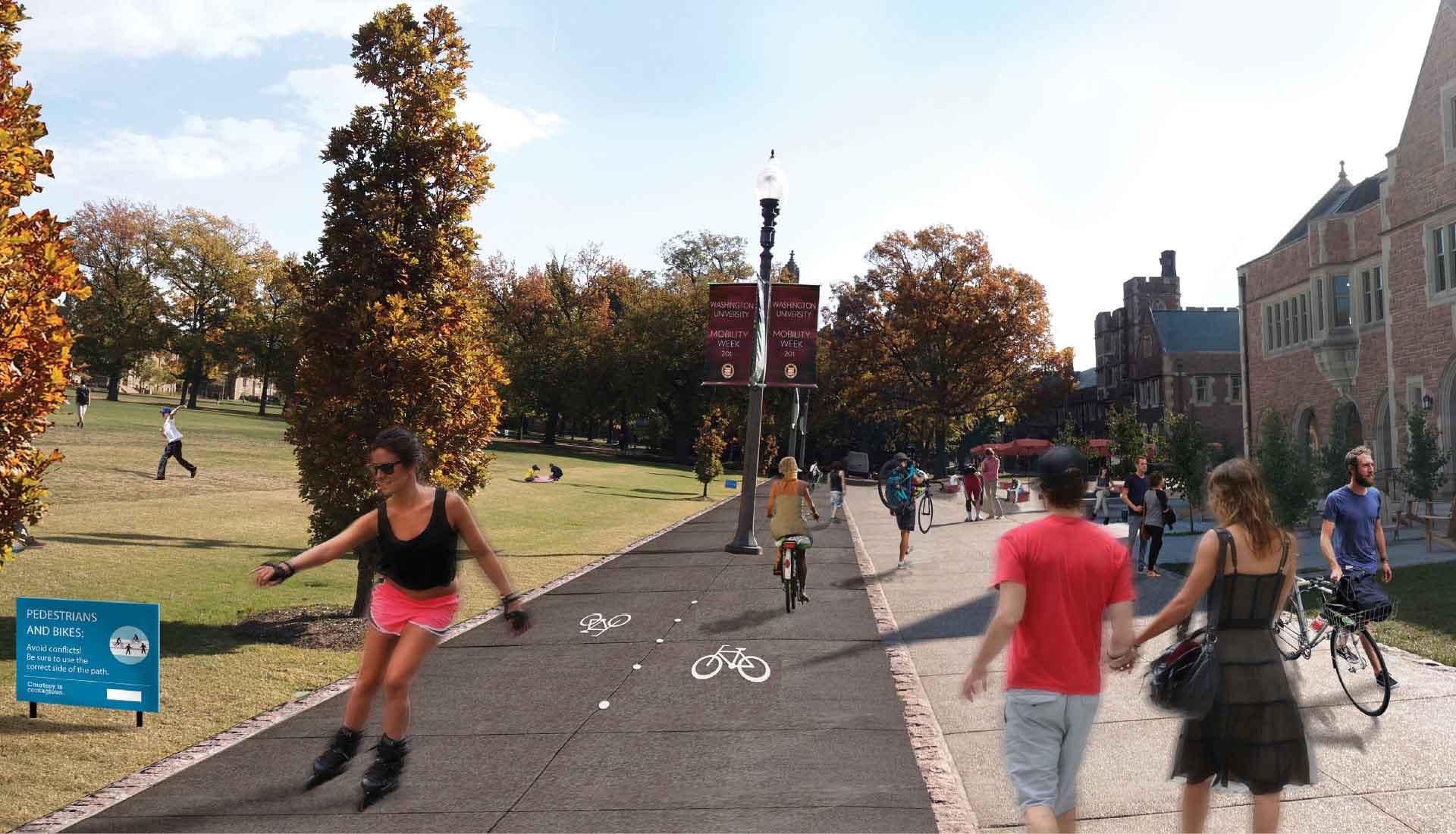Mobility Framework Masterplan
Washington University in St. Louis

Schulze + Grassov
Copenhagen, Denmark

The Mobility Framework Plan is a planning document for Washington University in St Louis (WUSTL) that provides guidelines for incremental and strategic improvements to the University’s mobility infrastructure. Developed in collaboration with a University appointed Mobility Task Force, the Mobility Framework Plan was lead by the public realm consulting firm Schultze + Grassov with Arbolope Studio collaborating as local Landscape Architecture design and research support.
The Mobility Framework Plan provides the University with a vision for a cohesive network of accessible paths, pedestrian and bicycle paths, roadways and public transit routes; a strategy for locating gathering spaces, nodes for bike parking, and vehicle parking; guidelines for pathway design, intersection design and signage; and a phased implementation plan.
A cornerstone of the Mobility Framework Plan was the Mobility Survey, distributed to all full-time students, faculty and staff of the University. The Survey results, published in a comprehensive Mobility Survey Report, provided quantifiable data regarding the mobility preferences, routes, destinations, issues and hopes of the WUSTL community.
Findings from the Mobility Survey along with the Mobility Framework Plan have already begun to influence Campus planning. Projects including WUSTL East End, Throop Drive One- Way and Knight Hall Court are highly influenced by the Framework Plan recommendations.





Mobility Framework Masterplan
Washington University in St. Louis
St. Louis, MO
170 acres
Mobility Planning
Campus Planning
Landscape Architecture
Streetscape Design
2016
Schulze + Grassov
Copenhagen, Denmark
The Mobility Framework Plan is a planning document for Washington University in St Louis (WUSTL) that provides guidelines for incremental and strategic improvements to the University’s mobility infrastructure. Developed in collaboration with a University appointed Mobility Task Force, the Mobility Framework Plan was lead by the public realm consulting firm Schultze + Grassov with Arbolope Studio collaborating as local Landscape Architecture design and research support.
The Mobility Framework Plan provides the University with a vision for a cohesive network of accessible paths, pedestrian and bicycle paths, roadways and public transit routes; a strategy for locating gathering spaces, nodes for bike parking, and vehicle parking; guidelines for pathway design, intersection design and signage; and a phased implementation plan.
A cornerstone of the Mobility Framework Plan was the Mobility Survey, distributed to all full-time students, faculty and staff of the University. The Survey results, published in a comprehensive Mobility Survey Report, provided quantifiable data regarding the mobility preferences, routes, destinations, issues and hopes of the WUSTL community.
Findings from the Mobility Survey along with the Mobility Framework Plan have already begun to influence Campus planning. Projects including WUSTL East End, Throop Drive One- Way and Knight Hall Court are highly influenced by the Framework Plan recommendations.





